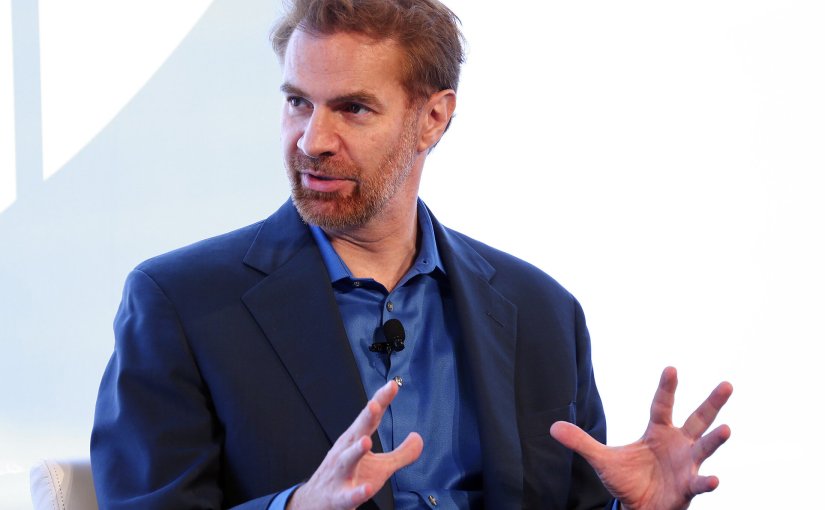TL;DR: March’s Go Flux Yourself is full of heart (rather than brains and muscles), discusses the “relationship economy”, off-field Manchester City stories, and tips to prepare the leaders of tomorrow …

Image created on Midjourney with the prompt “a hyperrealistic pep guardiola with a big heart on his Manchester City shirt handing out lemon shortbread to a female cleaner after a game”
The future
“In the past, jobs were about muscle; now they’re about brains; but in the future, they’ll be about the heart.”
I love these words of wisdom from Minouche Shafik, the incumbent President of Colombia University.
I heard them for the first time a couple of days ago, at LinkedIn’s Talent Connect conference in east London. On stage, delivering the closing keynote, was Aneesh Raman, a former speechwriter for Barack Obama during his time in the White House. Now, he is VP and Workforce Expert at the professional social media platform, which reached one billion members last year.
Raman talked about the need for more, well, heart in the age of artificial intelligence. And he argued, convincingly, that the human role and capabilities in this epoch should be imagined from a place of possibility, not fear.
He promoted the concept of the “relationship economy”, which will supersede the “knowledge economy”. While the latter is fuelled by the Internet, the former will be anchored on expanding human social and emotional capabilities.
Here, HR professionals have a pivotal role to play. They have the power to bring more humanity to work – paradoxically by using technology – and therefore spread more humanity, or heart, to the physical (and digital) world. At the moment, due to the almighty buzz around AI, “humans seem to have become an afterthought”, Raman posited.
My work wanderings this last month have revolved around AI-augmented jobs, skill-based recruitment, and future roles. I wrote my inaugural column for UKTN on a related topic. The headline was “£1.1bn to upskill the UK for future tech roles is too little too late”, and I didn’t hold back.
“In ordinary circumstances, a figure of £1.1bn – the headline-capturing amount the government announced last week to train ‘over 4,000’ UK students in future technologies – wouldn’t be lamentable,” I started. “Yet, considering total public spending on education was £116bn in 2022-23, according to the Institute for Fiscal Studies – down 8% from the 2010-11 figure – it smacks of a weak attempt to win some media coverage and votes in the looming general election.”
I cited an Axios study – published on the exact day Science and Technology Secretary Michelle Donelan announced the £1.1bn package to skill-up the UK in future tech roles – that found only 18% of UK workers believe that AI has improved productivity. Of the 17 countries polled, at the other end of the scale were India (67%), Indonesia (65%), and the UAE (62%).
Certainly, AI literacy is a hot topic, with frontrunners arguing leaders need to set the example, and support such learning and education across their organisations. Raman stated that 44% of UK companies are currently helping employees become AI literate – at the top was India, with 52%.
Earlier in March, I attended a Workday roundtable titled “Leveraging AI to Foster Skills and Inclusivity”. I have a vested interest in the future of work, not least because I’m the father of two young children. I explained to the panellists that I think the current school curriculum is unsuitable for tomorrow’s workers and asked how I should best prepare them.
My thinking on this subject has long been based on the so-called 4 Cs of 21st-century learning: critical thinking, communication, collaboration, and creativity. All four involve the heart Shafik is talking about. And they are why I’m pleased my son plays rugby – team sport is excellent for developing all four Cs. It’s also good for shared winning and losing experiences, which can be clouded in the digital age, and warped by social media – more on this below.
The Workday roundtable panellists shared my concern that today’s schooling is unfit for tomorrow. Yet they offered some useful extracurricular tips. For instance, Michael Houlihan, CEO of Generation UK and Ireland, which recruits, trains, and places unemployed young adults into career-launching jobs, suggested using generative AI tools to engage kids, such as having them interact with characters from their favourite books. This can turn a “spark” of interest into a “raging fire of learning and passion”.
He argued that exposing kids to technology and getting them comfortable with it through play at a young age is essential. Online learning tools and platforms, like Khan Academy, are creating exciting generative AI tools to help teach kids subjects like maths in an engaging, interactive way.
I was heartened by these answers, and Shafik’s quotation supported this movement toward the “relationship economy” – one accessed through technology but with humanity at its beating centre.
The present
I enjoy ghostwriting thought leadership articles for various executives – pinching expert opinions and inhabiting their psyche is like being an actor on the stage – and last week, I spoke with a Dutch consultant about geopolitical tensions. Refreshingly, he would not be led by my rather gloomy narrative.
He countered that, despite what one might see and hear in the media, humanity is in a relatively safe period. The reason most of us are more prone to doom-mongering is down to social media, which amplifies everything and causes collective anxiety to rocket, he posited.
While what’s happening in Ukraine and Gaza is horrific, and the climate crisis looms like a black cloud, undoubtedly, there is something in this hypothesis. How pleasing, then, that on Monday, Republican Florida Governor Ron DeSantis signed a bill that will ban social media accounts for children under 14 and require parental permission for 14- and 15-year-olds. If – and it’s not a given, especially considering who might (re)enter the White House – it becomes law, it will take effect on January 1.
It’s somewhat out of character for former presidential candidate DeSantis. Indeed, during a 2022 rally in protest of the Supreme Court ruling that overturned the Roe versus Wade abortion ruling, Democratic State Senator Tina Polsky announced to the crowd of about 250 at the Esplanade in Downtown Fort Lauderdale that DeSantis couldn’t care less about – especially his wife and daughters. “He’s heartless,” she said.
Perhaps DeSantis has a heart, after all. But will other states – and countries – follow suit? With Father Christmas having gifted my eldest child a Nintendo Switch last Christmas, but a few years off finding a smartphone under the tree, I sincerely hope so.
Social media platforms are toxic for society and corroding young minds – and older ones. I’ve removed all social media apps – bar LinkedIn, which is useful for work – from my phone, and gone to the extreme of using a grayscale setting so that the display is less appealing (if you are thinking of doing this, be warned that it is a nightmare to locate Lime bike parking bays in central London).
Pep Guardiola, Manchester City’s manager, is someone else who has a heart. And I’m not writing that just because I’m a (long-standing) fan of the club (I was in Istanbul last June, cheering on at the triumphant Champions League final).
At the start of the month, I was fortunate to be invited by City’s technology partner, Qualtrics, to the Etihad Stadium for a tour and a roundtable on how the club uses data to improve the customer experience ahead of the Champions League match against FC Copenhagen.
There were some lovely snippets of information. In a stint in the US before joining City in 2016, Guardiola scanned American sports for tips. City’s circular changing room, for example, is lifted from the NFL. The words snaking around the ceiling read: “Some are born here, some are drawn here, and all call it home.” That sense of togetherness is central to the club’s success. But the manager plays his part, on and off the pitch – and in the backroom. It was revealed that after every home game, the Spaniard seeks out changing room cleaner, Deb, and says thanks with a lemon shortbread. Nice touch.
City’s customer experience team are trying to win hearts and minds. Thanks to its partnership with Qualtrics, the club uses data to understand its fans and improve their experience. The department is bringing data from various sources into one place to create a “single source of truth” and a 360-degree view of fans. This includes operational data from their CRM and experience data from surveys, social media, call centre interactions, and so on.
On match days, the team uses real-time data and feedback to identify and resolve issues like long queues. Post-match surveys help assess what’s working well versus what needs improvement across different fan segments. It serves as another example of how the muscle and brain of AI can combine with the human heart to provide a superior experience.
The past
Ian Lees was the 64-year-old tour guide at the Etihad who told me about Pep’s lemon shortbread pressie for the cleaner. Ian has been at the club since 1976, was a first-team coach for a while, and was a font of knowledge – no AI will ever be able to replace passionate people like Ian.
He had so many incredible stories, but two stand out that show how peculiar – and sentimental, or superstitious – humans can be. John Stones, the rangy centre-back turned unlikely libero, apparently is a size 9 shoe, yet he wears size 8 football boots. Meanwhile, right-back and captain Kyle Walker’s winning goal in a game aged 14 had such an impact on him that he wears the same – and unwashed – shinpads today, 19 years later.
We all have quirks. That’s what makes us human. As I approach one year of sobriety – April 1 (no joke) will make it 12 months without booze – I shudder to recall some of the heartless and mindless things I’ve done in the past. Yet, reflecting on those drunk-fuelled missteps – and near-death experiences, as explored in a recent Upper Bottom podcast episode) – means the 2.0 version of me will be a better human.
Statistics of the month
- Over half (55%) of IT leaders feel pressure from their organisation’s leadership to implement new AI technology, according to Asana’s Work Innovation Lab. Yet, a quarter regret investing in AI too quickly, showing that business pressure means AI implementation isn’t as thoughtful as it could be.
- One in ten (10%) employees have witnessed or experienced sexual harassment at work in the UK, but nearly half (49%) of these did not report it, finds Personio.
- Gartner research indicates only 46% of employees feel supported trying to grow their careers at their organisation.
Stay fluxed – and get in touch! Let’s get fluxed together …
Thank you for reading Go Flux Yourself. Subscribe for free to receive this monthly newsletter straight to your inbox.
All feedback is welcome, via oliver@pickup.media. If you enjoyed reading, please consider sharing it via social media or email. Thank you.
And if you are interested in my writing, speaking and strategising services, you can find me on LinkedIn or email me using oliver@pickup.media.





















